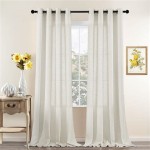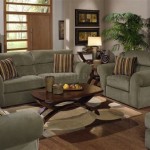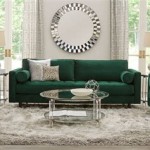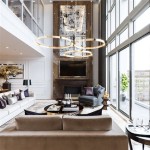Decorating Tips For Living Room
The living room often serves as the central gathering space in a home, functioning as a place for relaxation, entertainment, and socializing. Consequently, its design requires careful consideration to create an environment that is both aesthetically pleasing and functionally comfortable. Effective living room decoration involves a blend of spatial awareness, color theory, furniture selection, and accessory placement. These elements, when harmonized, can transform a simple space into a welcoming and engaging heart of the home.
Maximizing Space and Layout
A fundamental aspect of living room design is the optimization of available space. Whether the room is expansive or compact, a well-planned layout is crucial for ensuring comfortable movement and a sense of openness. Prior to selecting furniture or decorative items, assess the dimensions of the room, noting the location of windows, doorways, and any architectural features that may influence the arrangement. Consider the primary function of the living room. Is it mainly for watching television, hosting guests, or a combination of activities? The answer to this question will heavily influence the furniture arrangement.
In smaller living rooms, the focus should be on creating the illusion of more space. This can be achieved through several strategies. First, opt for furniture with a smaller footprint. Sectional sofas, while comfortable, can often overwhelm a smaller room. Consider a loveseat or a smaller sofa paired with armchairs. Second, employ vertical space. Tall bookshelves or wall-mounted shelves can draw the eye upwards, making the room feel taller. Mirrors are also invaluable tools for creating the illusion of depth. Strategically placed mirrors can reflect light and visually expand the space.
Furthermore, avoid clutter. Excess furniture and decorative items can make a small space feel cramped and disorganized. Prioritize essential pieces and eliminate anything that does not contribute to the overall aesthetic or functionality of the room. Employ storage solutions, such as ottomans with hidden storage or bookshelves with closed cabinets, to keep items out of sight. Light colors also tend to make a room feel larger, while dark colors can have the opposite effect.
In larger living rooms, the challenge shifts to creating a sense of intimacy and preventing the space from feeling too cavernous. This can be accomplished by dividing the room into distinct zones. For example, one area could be dedicated to seating and conversation, while another could be designated as a reading nook or a home office area. Area rugs can be used to visually define these zones and anchor the furniture within each space.
Furniture placement should prioritize flow and accessibility. Avoid placing furniture in such a way that it obstructs doorways or pathways. Ensure that there is ample space to move around comfortably. In larger rooms, creating conversational groupings of furniture can encourage interaction and prevent the space from feeling too impersonal. Large pieces of art or statement lighting fixtures can also serve as focal points, drawing the eye and adding visual interest.
Color Palette Selection and Application
The color palette is a critical component of any successful living room design. Colors have the power to evoke emotions, influence mood, and transform the overall atmosphere of a space. The selection of colors should be carefully considered, taking into account the desired ambiance and the architectural characteristics of the room.
A general guideline is to adhere to the 60-30-10 rule. This rule suggests that 60% of the room should be dominated by a primary color, 30% by a secondary color, and 10% by an accent color. The primary color typically appears on the walls and larger pieces of furniture, providing a foundation for the overall design. The secondary color can be incorporated through upholstery, rugs, and window treatments. The accent color is used sparingly in accessories such as cushions, throws, and artwork, adding pops of visual interest and personality.
When selecting a color palette, consider the existing features of the room, such as flooring, trim, and natural light. If the flooring is dark, consider lightening the walls to create contrast. If the room receives ample natural light, you may have more flexibility in choosing darker or more saturated colors. If the room is dimly lit, opt for lighter, brighter colors that will reflect light and make the space feel more airy.
Different colors evoke different emotions. Cool colors, such as blues and greens, tend to create a calming and serene atmosphere. Warm colors, such as reds and yellows, can create a more energetic and inviting ambiance. Neutral colors, such as whites, grays, and beiges, provide a versatile backdrop that can be easily adapted to different styles and tastes. When using neutral colors, consider adding texture and visual interest through different materials and finishes.
Avoid using too many contrasting colors in a small space, as this can create a sense of visual chaos. Instead, opt for a more harmonious palette with subtle variations in tone and shade. Consider using a color wheel to identify complementary colors, which can create a balanced and visually appealing design. Don't be afraid to experiment with different color combinations to find what works best for your space and your personal style.
Furniture Selection and Arrangement
Furniture is more than just functional items; it is a defining element of living room aesthetics and comfort. The selection and arrangement of furniture should be guided by both practical considerations and aesthetic principles. Prioritize pieces that are comfortable, durable, and visually appealing, and arrange them in a way that maximizes space and promotes conversation.
The sofa is often the focal point of the living room. Choose a sofa that is appropriately sized for the room and that reflects your personal style. Consider factors such as seating capacity, comfort level, and durability. Before purchasing a sofa, measure the space where it will be placed and ensure that it will fit comfortably without obstructing doorways or pathways. Consider the sofa's fabric and construction. High-traffic areas benefit from durable, stain-resistant fabrics. For a more formal living room, consider velvet or linen fabrics.
Armchairs are another essential element of living room furniture. They provide additional seating and can add visual interest to the space. Choose armchairs that complement the sofa in terms of style and color. Consider the size and shape of the armchairs to ensure that they fit comfortably within the room. A well-placed accent chair can add personality and a pop of color to the living room.
Coffee tables and side tables provide surfaces for drinks, books, and other items. The coffee table should be placed within easy reach of the sofa and armchairs. Consider the size and shape of the coffee table in relation to the other furniture in the room. A rectangular coffee table is a classic choice, but a round or oval coffee table can also work well in some spaces. Side tables should be placed next to armchairs and sofas to provide convenient surfaces for lamps and other accessories.
Beyond the core furniture pieces, also consider storage solutions such as bookshelves, cabinets, and media consoles. These pieces can help to keep the living room organized and clutter-free. Choose storage solutions that complement the overall style of the room and that provide ample space for storing books, media equipment, and other items. Maximize vertical space with tall bookshelves. Optimize closed storage for items you prefer to keep out of sight.
Furniture arrangement is critical for creating a comfortable and functional living room. Arrange furniture in a way that promotes conversation and interaction. Create a focal point, such as a fireplace or a large piece of art, and arrange the furniture around it. Avoid placing furniture against the walls, as this can make the room feel smaller. Instead, float the furniture in the center of the room to create a more open and inviting space. Ensure ample space for movement and accessibility and that the arrangement prioritizes flow.
Lighting and Accessories
Lighting and accessories are the finishing touches that can transform a living room from functional to exceptional. Thoughtfully chosen lighting can set the mood, highlight architectural features, and enhance the overall ambiance of the space. Accessories, such as artwork, cushions, and rugs, add personality, visual interest, and texture.
Layered lighting is essential for creating a well-lit and inviting living room. This involves combining different types of lighting, such as ambient lighting, task lighting, and accent lighting. Ambient lighting provides overall illumination and is often provided by overhead fixtures, such as chandeliers or recessed lights. Task lighting provides focused illumination for specific activities, such as reading or working. Accent lighting highlights architectural features or artwork and adds visual interest to the space.
Table lamps and floor lamps are versatile lighting options that can be used to provide both task lighting and ambient lighting. Place table lamps on side tables and console tables to add warmth and illumination to the space. Floor lamps can be used to provide reading light or to highlight a particular area of the room. Consider lampshades that complement the overall style and color palette of the living room.
Dimmers are a valuable addition to any lighting scheme, as they allow you to adjust the intensity of the light to suit different situations. Use dimmers to create a cozy and intimate atmosphere in the evening or to brighten the room during the day.
Artwork is a powerful way to add personality and visual interest to the living room. Choose artwork that reflects your personal taste and style. Consider the size and scale of the artwork in relation to the wall where it will be placed. A large piece of art can serve as a focal point, while smaller pieces can be grouped together to create a gallery wall. Frame artwork to complement the overall style of the room.
Cushions and throws add comfort, texture, and color to the living room. Choose cushions and throws that complement the color palette and style of the room. Mix and match different patterns and textures to create visual interest. Arrange cushions on sofas and armchairs to make them more comfortable and inviting. A well-placed throw blanket can add warmth and coziness to the space.
Rugs define zones, add warmth and texture, and tie together the room's aesthetic. Area rugs ground the furniture in a conversation area. Runners or floor mats are suitable for entry areas.

Living Room Decor Ideas For Your Home Design Cafe
:strip_icc()/cdn.cliqueinc.com__cache__posts__212361__-2030968-1483470364.700x0c-8571e60cad7b42a981ab29ae10b5c153-497b002f87af4747b2ab38b560e7c0fd.jpg?strip=all)
How To Decorate A Living Room 20 Ideas And Common Mistakes

Small Living Room Decorating Ideas 5 Tips To Open Up Your Space

50 Inspirational Living Room Ideas Design

Looking For Ideas To Decorate Your Living Room Designcafe

Small Living Room Decorating Ideas Designcafe

How To Decorate A Living Room 11 Designer Tips Houzz

Living Room Decorating Tips Ideas And Essentials Spaces

10 Stunning Small Living Room Ideas To Maximize Space
:strip_icc()/cdn.cliqueinc.com__cache__posts__212361__-2030971-1483470365.700x0c-bcb3742ec42e4ef297e814adf2ca7870-855bb6998a684a5ebffc99e1d4c922e1.jpg?strip=all)
How To Decorate A Living Room 20 Ideas And Common Mistakes








